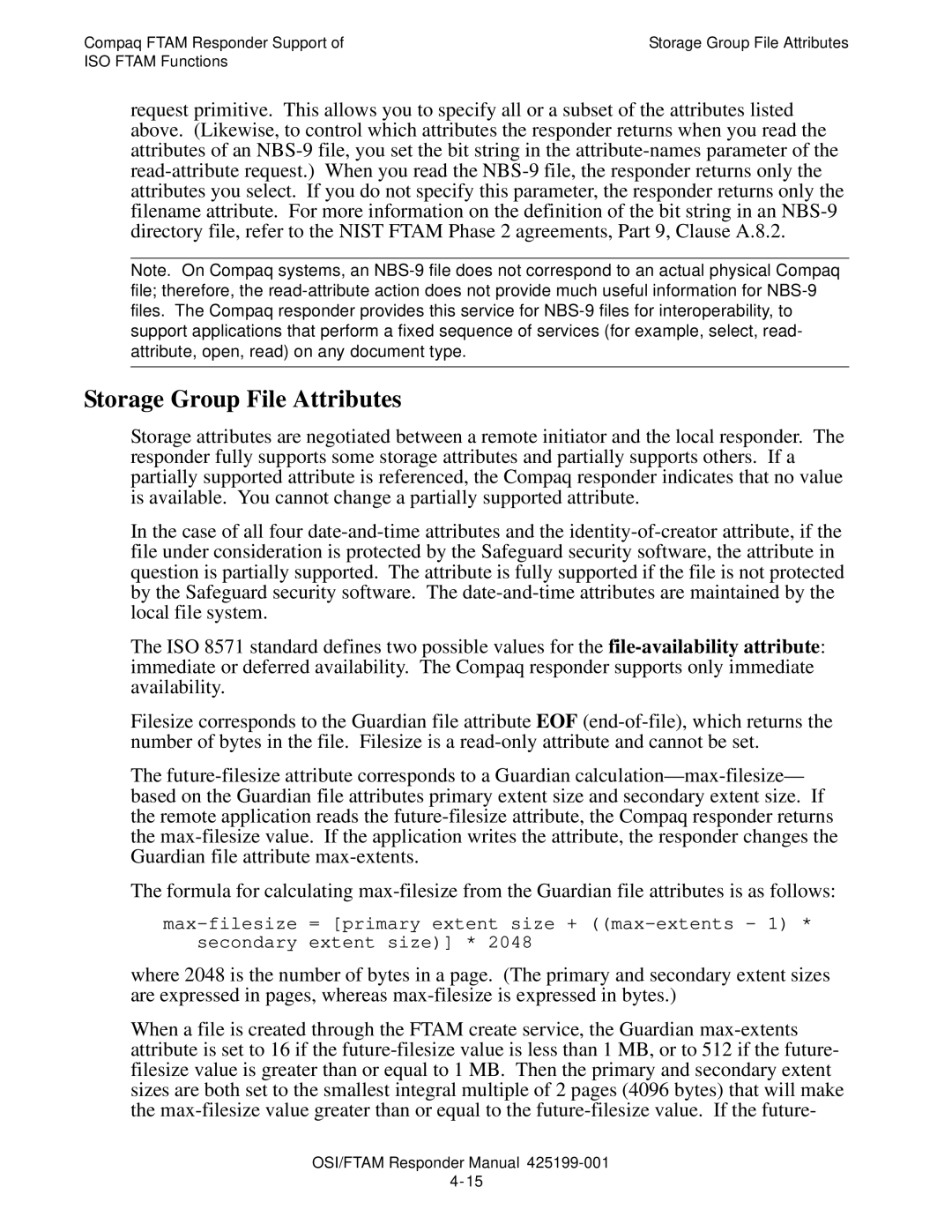Compaq FTAM Responder Support of | Storage Group File Attributes |
ISO FTAM Functions | |
request primitive. This allows you to specify all or a subset of the attributes listed above. (Likewise, to control which attributes the responder returns when you read the attributes of an NBS-9 file, you set the bit string in the attribute-names parameter of the read-attribute request.) When you read the NBS-9 file, the responder returns only the attributes you select. If you do not specify this parameter, the responder returns only the filename attribute. For more information on the definition of the bit string in an NBS-9 directory file, refer to the NIST FTAM Phase 2 agreements, Part 9, Clause A.8.2.
Note. On Compaq systems, an NBS-9 file does not correspond to an actual physical Compaq file; therefore, the read-attribute action does not provide much useful information for NBS-9 files. The Compaq responder provides this service for NBS-9 files for interoperability, to support applications that perform a fixed sequence of services (for example, select, read- attribute, open, read) on any document type.
Storage Group File Attributes
Storage attributes are negotiated between a remote initiator and the local responder. The responder fully supports some storage attributes and partially supports others. If a partially supported attribute is referenced, the Compaq responder indicates that no value is available. You cannot change a partially supported attribute.
In the case of all four date-and-time attributes and the identity-of-creator attribute, if the file under consideration is protected by the Safeguard security software, the attribute in question is partially supported. The attribute is fully supported if the file is not protected by the Safeguard security software. The date-and-time attributes are maintained by the local file system.
The ISO 8571 standard defines two possible values for the file-availability attribute: immediate or deferred availability. The Compaq responder supports only immediate availability.
Filesize corresponds to the Guardian file attribute EOF (end-of-file), which returns the number of bytes in the file. Filesize is a read-only attribute and cannot be set.
The future-filesize attribute corresponds to a Guardian calculation—max-filesize— based on the Guardian file attributes primary extent size and secondary extent size. If the remote application reads the future-filesize attribute, the Compaq responder returns the max-filesize value. If the application writes the attribute, the responder changes the Guardian file attribute max-extents.
The formula for calculating max-filesize from the Guardian file attributes is as follows:
max-filesize = [primary extent size + ((max-extents - 1) * secondary extent size)] * 2048
where 2048 is the number of bytes in a page. (The primary and secondary extent sizes are expressed in pages, whereas max-filesize is expressed in bytes.)
When a file is created through the FTAM create service, the Guardian max-extents attribute is set to 16 if the future-filesize value is less than 1 MB, or to 512 if the future- filesize value is greater than or equal to 1 MB. Then the primary and secondary extent sizes are both set to the smallest integral multiple of 2 pages (4096 bytes) that will make the max-filesize value greater than or equal to the future-filesize value. If the future-
4-15

